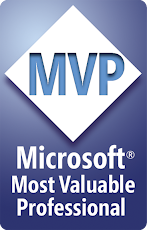こんにちは、富士榮です。
引き続きAAMVAのMobile Drivers License Implementation Guidelines 1.4を読んでいきます。
今回は2章のmDL Solution Overviewを見ていきます。
An mDL can be described as leveraging a mobile device to transfer (or cause to be transferred) driver’s license information to an mDL verifier, who cryptographically authenticates the information using the Issuing Authority’s public key. A visual rendering of a DL on a mobile device’s display (and which can be misused as a “flash pass”) therefore does not qualify as an mDL (also see section 8).
mDL は、発行局の公開鍵を使用して情報を暗号的に検証する mDL検証者に運転免許証情報を転送する (または転送させる)ために、モバイル機器を活用するものと説明できる。したがって、モバイル機器のディスプレイ上に DL を視覚的に表示するもの(「フラッシュパス」として悪用される可能性があるもの)は、mDL として認められない(セクション 8 も参照)。
スクショやオレオレはダメってことですね。
An mDL solution can be described in terms of the following three properties:
mDLソリューションは、以下の3つの性質で説明できる:
1. Data retrieval method. The device retrieval method (sometimes referred to as the offline model) works without outside connectivity (for both the mDL holder’s device and the mDL reader) at the time the transaction takes place, thus requiring the mDL data to reside on the mDL holder’s device. Under the server retrieval method (sometimes referred to as the online model, and not to be confused with use of an mDL in an unattended transaction setting such as over the Internet) mDL data is retrieved in real time directly from the Issuing Authority. ISO/IEC 18013-5 requires an mDL to support device retrieval, and allows a device to additionally support server retrieval.
1. データ検索方式。デバイス検索方式(オフラインモデルと呼ばれることもある)では、取引時に外部(mDL保持者のデバイスとmDLリーダーの両方)に接続することなく動作するため、mDLデータはmDL保持者のデバイスに存在する必要がある。サーバー検索方式(オンラインモデルと呼ばれることもあり、インターネット経由のような無人トランザクションでのmDLの使用と混同されないよう注意)では、mDLのデータは発行機関からリアルタイムで直接取得される。ISO/IEC 18013-5は、mDLがデバイスの検索をサポートすることを要求しており、さらにデバイスがサーバーの検索をサポートすることを認めている。
2. Transaction type. An attended transaction is one where the mDL holder and the mDL verifier are in close proximity to each other. The engagement mechanisms currently reflected in ISO/IEC 18013-5 (QR code, NFC) were selected to support such close proximity. An unattended transaction is one where the mDL holder and the mDL verifier are not in close proximity, e.g. when an mDL holder wants to provide identity or proof of age to an online retailer. ISO/IEC 18013-5 does not currently support unattended transactions. However, work is ongoing to standardize a solution.
2. トランザクションの種類。対面型トランザクションとは、mDL保有者とmDL検証者が近接しているトランザクションのことである。現在ISO/IEC 18013-5に反映されているエンゲージメントの仕組み(QRコード、NFC)は、このような近接をサポートするために選択された。無人トランザクションとは、mDL 保持者と mDL 検証者が近接していないトランザクショ ンのことであり、たとえば、mDL 保持者がオンライン小売業者に ID または年齢証明を提供する場合などである。ISO/IEC 18013-5 は現在、無人トランザクションをサポートしていない。ただし、ソリューションを標準化する作業が進行中である。
3. Timing of (and responsibility for) matching. This property is about the responsibility for confirming, at transaction time, that the person presenting the mDL data is the person described by the mDL data. In a post-matched transaction, the link between the mDL Presenter and the mDL data is made after the mDL data is shared and is performed by the mDL verifier. This happens by comparing the portrait image in the mDL with the person presenting the mDL. ISO/IEC 18013-5 supports postmatched transactions. In a pre-matched transaction, the link between the mDL Presenter and the mDL is made right before the mDL data is shared. Although the Issuing Authority should not be involved in real time, the Issuing Authority does take responsibility for certifying the link. The mDL verifier receives only the confirmation that the person presenting the mDL data is the person described by the shared mDL data. ISO/IEC 18013-5 does not currently support pre-matched transactions. However, work is ongoing to standardize a solution (and notably one that does not involve the Issuing Authority at transaction time).
3. 照合のタイミング(および責任)。このプロパティは、mDLデータの提示者がmDLデータに記述された本人であることをトランザクション時に確認する責任に関するものである。マッチング後のトランザクションでは、mDL提示者とmDLデータのリンクは、mDLデータが共有された後に行われ、mDL検証者によって実行される。これは、mDL内の肖像画像とmDL提示者を比較することで行われる。ISO/IEC 18013-5 はポストマッチトランザクションをサポートしている。事前照合トランザクションでは、mDL提示者とmDLのリンクは、mDLデータが共有される直前に行われる。発行局はリアルタイムで関与すべきではないが、発行局はリンクを認証する責任を負う。mDLの検証者は、mDLデータの提示者が共有されたmDLデータに記述された本人であることの確認のみを受ける。ISO/IEC 18013-5は現在、事前照合トランザクションをサポートしていない。しかし、(特にトランザクション時に発行局が関与しない)ソリューションを標準化するための作業が進行中である。
デバイスリトリーバル、サーバーリトリーバルの2方式があること、対面、非対面のシナリオが定義されていること、そして検証者がHolderバインディングを行うことが求められている、ということです。本人確認書類として利用することを考えると当然ですね。
With this as background, Figure 1 provides a high-level overview of the mDL ecosystem described in ISO/IEC 18013-5.
これを背景に、図1はISO/IEC 18013-5で説明されているmDLエコシステムのハイレベルな概要を示している。
Three interactions are involved:
3つの相互作用が関係している:
1. Interaction between the Issuing Authority and the mDL. This interaction results in getting everything onto an mDL holder’s device that is needed to use the mDL. There is also subsequent interaction between the Issuing Authority and the mDL to keep the mDL information updated. Technical components of this interaction will be standardized in the ISO/IEC 23220 series.
1. 発行局とmDLの間のインタラクション。このやりとりの結果、mDLを使用するために必要なすべての情報がmDLホルダーのデバイスに取り込まれます。また、発行局とmDLの間には、mDLの情報を更新するための相互作用があります。このインタラクションの技術的なコンポーネントは、ISO/IEC 23220シリーズで標準化される予定です。
Issueの時の仕組みですね。OpenID for Verifiable Credential Issuanceでもmdocを扱うことができますので、そちらを非対面のシナリオでは使うケースもありますが、ここではISO 23220が挙げられています。
2. Interaction between the mDL and the mDL reader infrastructure of the mDL verifier. This interaction comprises the transfer of technical information to set up a secure communication channel between the two parties, and the subsequent exchange of the driver’s license information (or of a point from where it can be retrieved) that the mDL holder agreed to share. ISO/IEC 18013-5 fully standardizes an interface describing this interaction.
2. mDLとmDL検証装置のmDL読み取りインフラ間のインタラクション。このインタラクションは、両者間の安全な通信チャネルを設定するための技術情報の転送と、それに続く mDL 保持者が共有に同意した運転免許証情報(またはそれを取得できるポイント)の交換で構成される。ISO/IEC 18013-5 は、このインタラクションを記述するインタフェースを完全に標準化する。
こちらはPresentationの話ですね。こちらもOpenID for Verifiable Presentationでも対応ができる範囲です。ここではISO 18013-5での対応が挙げられています。
3. Interaction between the mDL reader infrastructure and the Issuing Authority. This interaction can be used for different purposes, depending on the data retrieval method involved:
- Device retrieval method: The interaction is used by the mDL verifier to obtain the public keys needed to authenticate mDL information. Such interaction can also involve an intermediary entity that aggregates and disseminates certificates. (In North America, AAMVA’s Digital Trust Service performs this function – see section 5.) Regardless, the mDL verifier must trust that the certificate truly comes from a valid Issuing Authority. This interaction does not need to occur at the time of an mDL transaction. ISO/IEC 18013-5 fully standardizes a method supporting this interaction.
- Server retrieval method: The interaction is used by the mDL verifier for two purposes:
- As in the case for the device retrieval method, to obtain the public key of the Issuing Authority
- To pass to the Issuing Authority, in real time, a token that identifies the mDL holder and the mDL, and to receive the actual mDL information back from the Issuing Authority. ISO/IEC 18013-5 fully standardizes an interface describing this interaction
3. mDLリーダーインフラと発行局との間のインタラクション。このインタラクションは、関係するデータ検索方法に応じて、異なる目的で使用することができる:
- デバイスの検索方法: このインタラクションは、mDL 検証者が mDL 情報の検証に必要な公開鍵を取得するために使用される。このようなインタラクションには、証明書を集約し普及させる仲介エンティティが関与することもできる。(北米では、AAMVA のデジタル・トラスト・サービスがこの機能を果たす。) いずれにせよ、mDLの検証者は、証明書が本当に有効な発行機関から発行されたものであることを信頼しなけれ ばならない。この相互作用は、mDLのトランザクション時に発生する必要はない。ISO/IEC 18013-5は、この相互作用をサポートする方法を完全に標準化している。
- サーバーの検索方法: このインタラクションは、mDL検証者によって2つの目的で使用される:
- デバイス検索方式と同様に、発行局の公開鍵を取得する。
- mDLの所有者とmDLを識別するトークンをリアルタイムで発行局に渡し、実際のmDL情報を発行局から受け取ること。ISO/IEC 18013-5は、このインタラクションを記述するインタフェースを完全に標準化している。
ここはデバイスリトリーバルなのかサーバーリトリーバルなのかで異なりますが、mDLリーダーがIssuerへの問い合わせを行うケースについて記載されていますね。いわゆるDIDを使ったVCとの大きな違いはIssuing Authorityが完全に中央集権であることかと思います。(免許なので当然ですね)そのため、検証用の公開鍵を取得する場合は堂々とVerifierからIssuerへのインタラクションが発生しています。(ここは若干プライバシーとのトレードオフはありますが)
Note that ISO/IEC 18013-5 specifies system interfaces and a certificate exchange method, and on purpose does not address the user interface (e.g. the look, feel and functionality of an mDL app residing on an mDL holder’s device). It is left up to Issuing Authorities (and their implementers) to innovate in this area.
ISO/IEC 18013-5は、システム・インターフェースと証明書交換方法を規定するものであり、ユーザ・イン ターフェース(例えば、mDL保有者のデバイスに常駐するmDLアプリのルック、フィール、機能性)については、 意図的に触れていないことに留意されたい。この分野での技術革新は、発行局(およびその実装者)に委ねられている。
ということで、本日はここまで。







0 件のコメント:
コメントを投稿